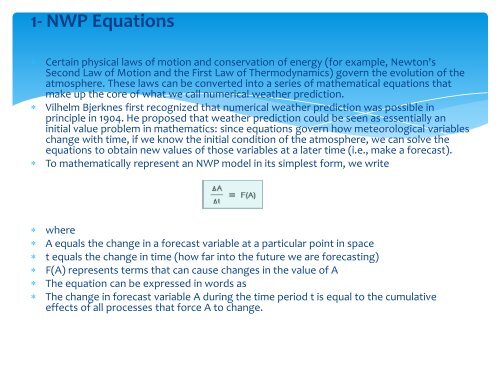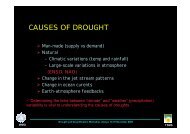Slayt 1 - RTC, Regional Training Centre - Turkey
Slayt 1 - RTC, Regional Training Centre - Turkey
Slayt 1 - RTC, Regional Training Centre - Turkey
You also want an ePaper? Increase the reach of your titles
YUMPU automatically turns print PDFs into web optimized ePapers that Google loves.
1- NWP EquationsCertain physical laws of motion and conservation of energy (for example, Newton'sSecond Law of Motion and the First Law of Thermodynamics) govern the evolution of theatmosphere. These laws can be converted into a series of mathematical equations thatmake up the core of what we call numerical weather prediction.Vilhelm Bjerknes first recognized that numerical weather prediction was possible inprinciple in 1904. He proposed that weather prediction could be seen as essentially aninitial value problem in mathematics: since equations govern how meteorological variableschange with time, if we know the initial condition of the atmosphere, we can solve theequations to obtain new values of those variables at a later time (i.e., make a forecast).To mathematically represent an NWP model in its simplest form, we writewhereA equals the change in a forecast variable at a particular point in spacet equals the change in time (how far into the future we are forecasting)F(A) represents terms that can cause changes in the value of AThe equation can be expressed in words asThe change in forecast variable A during the time period t is equal to the cumulativeeffects of all processes that force A to change.
















